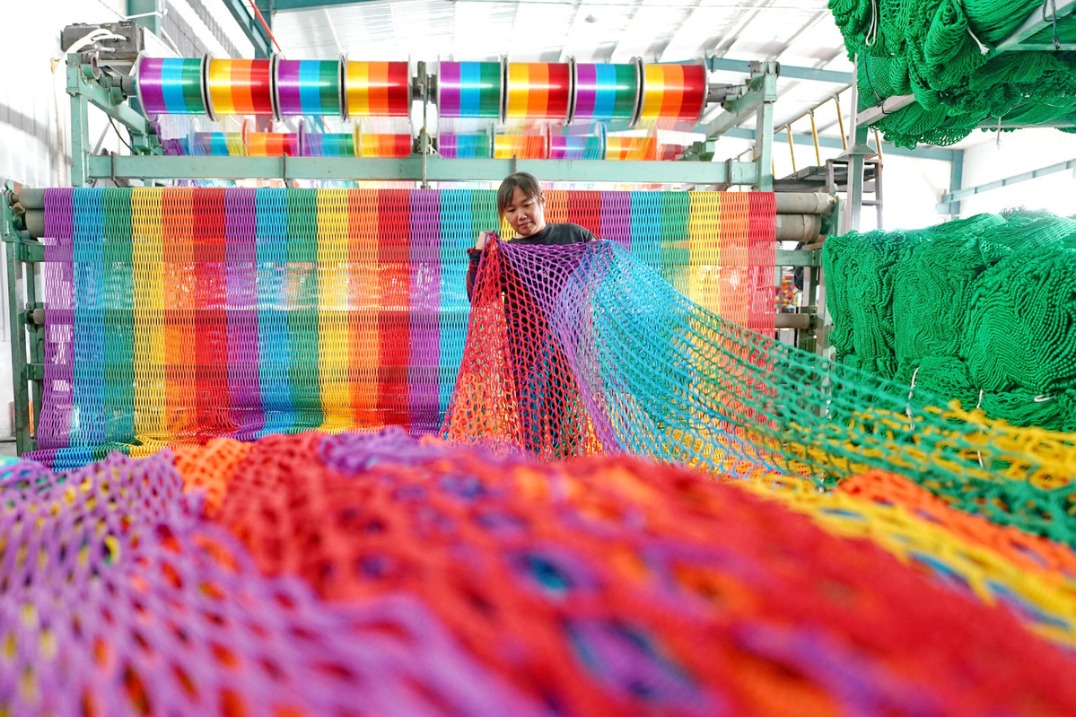'Photovoltaic sea' forming in North China desert
China Daily | Updated: 2024-09-09 09:07

HOHHOT — In Chaideng village in Ordos city, Inner Mongolia autonomous region, 3.46 million blue solar panels stretch across the desert, covering 30 square kilometers, transforming the endless sands into a shimmering "photovoltaic sea".
The solar power base is part of an ambitious solar energy desert reclamation project known as the "great photovoltaic wall", spanning along the northern edge of the Kubuqi Desert.
This grand project, though not able to rival the real Great Wall in length, is planned to extend about 400 km with an average width of five km, according to Liu Tianyun, deputy director of the forestry and grassland bureau of Ordos.
It will set a new record in area for photovoltaic farms in China and produce 100 gigawatts of installed capacity upon completion, Liu said.
To date, the city has installed 5.42 gigawatts of solar power on over 133 sq km of sandy land.
The Kubuqi Desert has expansive and open land perfect for solar farms. The area enjoys plentiful solar resources, with approximately 3,100 hours of sunshine each year.
In addition to generating power, local solar projects have also proved to be helpful in mitigating the area's frequent and intense sandstorms and desertification.
The project spearheaded an innovative approach, with power-generating solar panels placed on the top, allowing plants to grow on the ground and small livestock to graze.
The solar panels can reduce groundwater evaporation by 20 to 30 percent while providing shade from the sun and shelter from the wind, which supports plant growth. With plants and poultry thriving in the shade, this approach yields both economic and ecological benefits.
In some arid areas, solar-powered drip irrigation is also being adopted for green desert landscapes.
To adapt to the challenging conditions of desert environments, innovations in photovoltaic modules have been introduced.
The photovoltaic modules use bifacial technology and high-efficiency cells that can capture sunlight from both sides, taking advantage of the high reflectivity of sandy surfaces to boost power generation by approximately 8 percent.
The modules' life span has also been extended from 25 years to 30 years after the adoption of dual-glass encapsulation materials.
The minimum clearance between the photovoltaic panels and the ground has been adjusted to about 2.5 meters, providing ample space for both people and machinery to move around easily for farm work.
The city of Ordos, also known for its abundant coal resources, has several large coal mines scattered across the Kubuqi Desert.
The treated drainage water from the coal mines is channeled from these mines to the solar power base and used to clean the solar panels and water the plants.
Standing under a solar panel array in Chaideng, Zhang Xiuling, vice-mayor of Ordos, said that by planting crops in the sand and topping them with solar panels, they are essentially creating a double-layered "shield", keeping the shifting sands firmly in check.
Xinhua
























